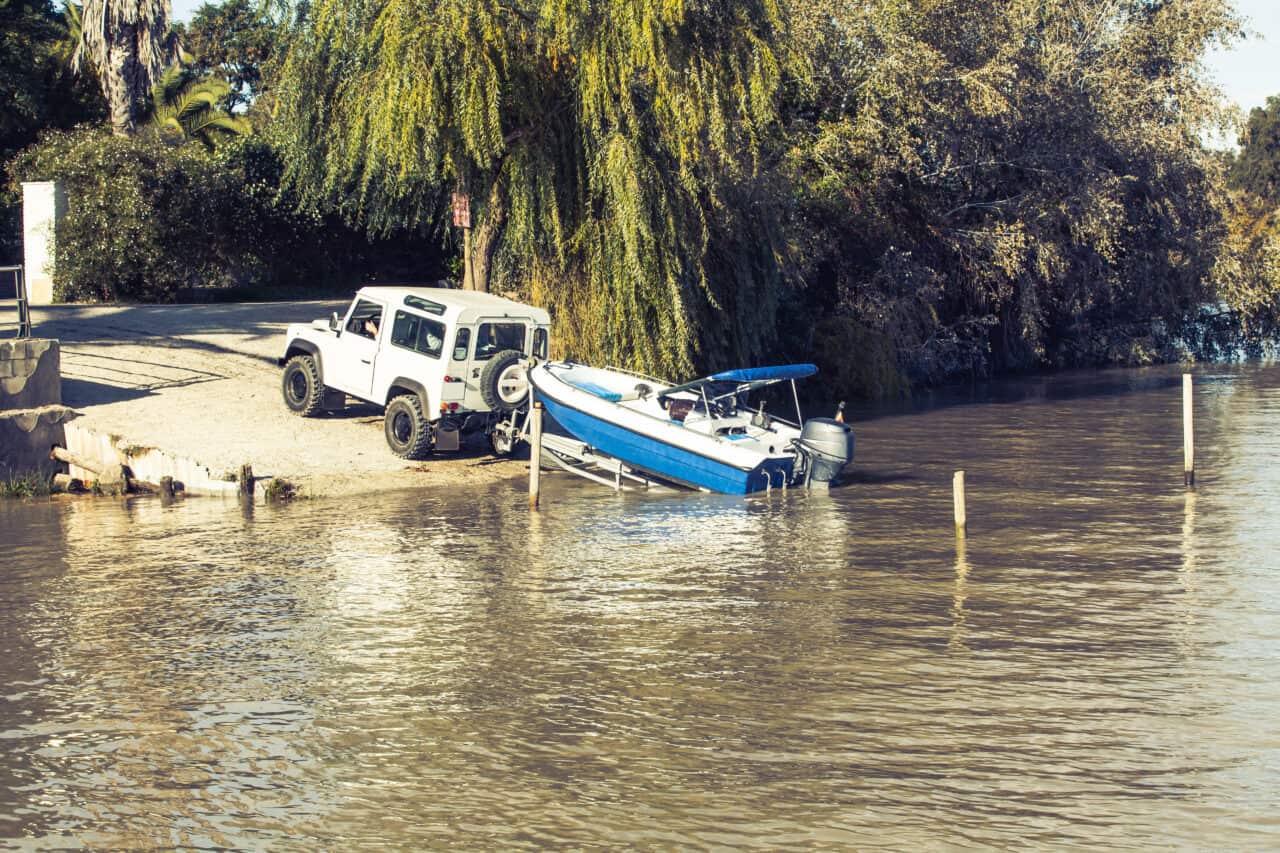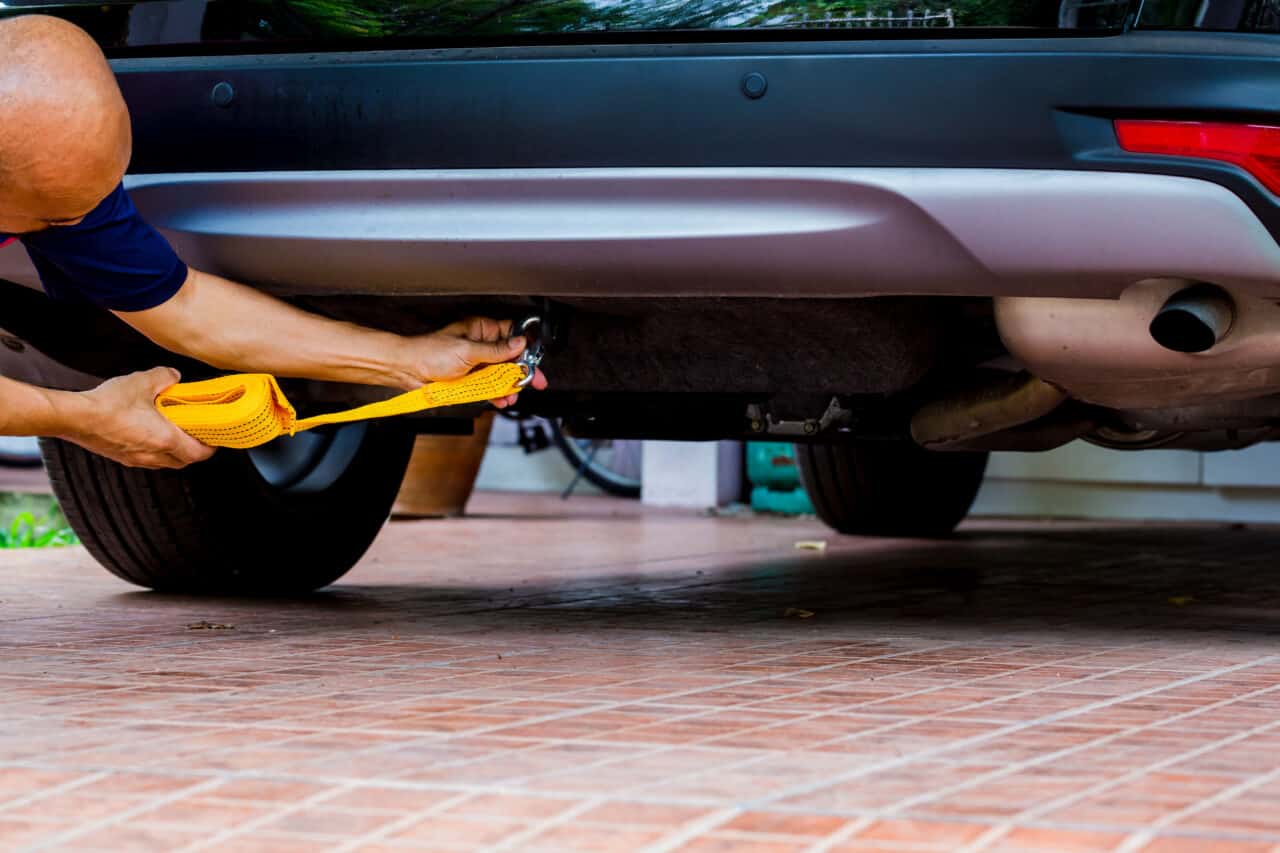Will a Leveling Kit Affect My Vehicles Performance?

With all of the options afforded to truck owners these days like headlamp conversions, bigger tires, or even better looking front grilles you might be wondering how you can mix both aesthetics and function. One of the most asked questions, though, is whether or not the commonly installed leveling kit could alter vehicles towing capabilities.
A leveling kit does not have any significant impact on towing or payload capability since it’s only the body of the truck that is lifted. However, it is necessary to watch out for other forms of lifts, such as suspensions, which decrease towing capability.
Keep reading to find out more about why a level kit won’t have any effect on your towing capabilities, the difference between different lift kits, and what exactly you can do to better equip your vehicle to enhance its towing abilities.
Leveling Impact on Towing Capabilities of Your Truck
A few inches of height at the front of your vehicle that levels it out will not have a large enough effect on the towing capabilities of your truck for you to notice.
While it’s optimal, in terms of towing or hauling, for you to keep the height of your truck the way it was when you first purchased it, the two inches a leveling kit will afford you isn’t going to do any damage. The only way you might notice a difference is if you were carrying more weight than is recommended by truck manufactures, which is not common. Plus, this is something you shouldn’t do in the first place.
To better understand why this type of modifications does not impact towing unlike many other mods, let’s talk about what a leveling kit does to your truck.
What Does a Leveling Kit Do?
Essentially, a leveling kit involves installing hardware that raises the front of the vehicle about 2-inches to match the stock height of the back of the truck.
Trucks are built that way these days for a few reasons. The first is that there is always going to be a substantial amount of weight on the front of the truck that weighs it down, such as the engine, or even you when you sit in the driver’s seat.
The second reason is that trucks need to be able to carry a large amount of weight in the bed or by way of a ball hitch. That’s one of the reasons pickup trucks were built in the first place so that they could haul something large from one place to another. The higher up the truck bed, the more weight can be placed in it, allowing you to get more transported and more done.
The less weight that is on the back of your truck also allows you to be able to tow more weight, such as another vehicle. So you might be wondering; why do some people still install leveling kits in their trucks if the reason for buying a truck is towing?
The answers are pretty simple. Some people just prefer the look and feel of a level truck, even if it costs a few hundred dollars and they have to adjust their headlights. And these days, there seems to be very little use for a ton of weight allowance on the back of a truck.
Why Do People Install Leveling Kits?
Simply put, both lift and leveling kits are used to raise the body of the truck away from the axles to fit larger tires and increase ground clearance. A leveling kit involves hardware to slightly raise the front of the vehicle so it matches the stock height in the back.
For some truck owners, it’s more about the look of their brand new, shiny truck, and less about the utilization. While you may need a truck for some small transportation needs, the fact that you can show it off to your friends is much more important. It’s much like how people may never need the high speeds a sports car can afford them, but it’s still fun to have.
In some places, like the southwest, truck owners even like to replicate the look of racing vehicles. They can do this by adding a few inches to create a higher front end for more suspension travel, and a lower back end for more stability during high-speed turns.
Another reason some people level their trucks is to allow for bigger tires. While it’s recommended that you can install 33″ tires on most trucks without any height addition, it’s thought to have a better look and give a little more clearance on the front end if you pair them with a leveling kit.
Different Leveling Kits and Towing Capacity
Beyond the reasons, leveling kits are comparatively affordable and easy to install. And there are a few different options you can choose from that best suit your vehicle, including coil spring spacers, torsion bar keys, and strut extensions.
Something to remember will all of these different types of leveling kits is that they will not have an effect on your towing capabilities. While different in their methods and materials, they only raise the front of a vehicle up a few inches and don’t change anything else.
Coil Spring Spacers
Coil Spring Spacers are spacers that are used to raise the vehicle up, level it, or for weight jacking if the car is being raced. They are usually installed under the coil spring, between the coil and the lower control arm, but some are installed on top of the coil spring. They come in different mediums, mainly Aluminum, Polyurethane, and Rubber.
As the name suggests, coil spring spacers space your spring down a set amount from the spring seat, which equates to lift on your four-wheel drive. They’re cheap, easy to fit, and a solid alternative to changing out springs.
Torsion Bar Keys
A torsion bar suspension, or a torsion spring suspension, is a less talked about form of suspension, but worth noting. A lot of truck owners who just want a 1-inch to 1.5-inch height increase find it affordable and easy to do.
Essentially, a torsion bar is a metal rod that is anchored to one of your vehicle’s body and at the other end to the suspension lower link. When the wheel goes over a bump, the bar will twist and then afterward, return to its original position allowing the car to go back to its normal drive height. Something great about torsion bars, and why they are installed these days is that they are adjustable, and can be mounted longitudinally or transversely in the system.
While a great way to add a little lift without sacrificing maneuverability, you have to be careful with this type of lift method, as turning your torsion bars up more than about two or three turns can wreak havoc on your truck’s drivability.
Strut Extensions
Strut extensions or strut spacers are mainly used on cars with a coil-over strut for the front suspension (which is most half-ton and mid-sized trucks or SUVs.) This kind of leveling kit involved putting a spacer on the top or bottom of the factory strut and raising the suspension by just a couple of inches.
Like the other options, strut extensions are fairly affordable. They are typically made of steel, billet aluminum, or PPA plastic, which is heat, chemical, and corrosion-resistant. And they are easily removable if you end up having second thoughts about your ride.
How Do Other Lift Methods Affect Your Towing Capabilities?

There are a few different options when it comes to lifting a truck. There is the basic, and arguably the cheapest, leveling kit which is designed to add a few inches to the front of your car in order to make the front and back height equal. As already explained, they don’t have much of an effect on your towing capabilities so you don’t need to worry about it too much. But what about the other lift options?
For those who actually want a few more inches than a leveling kit will afford them, there is the classic body lift and suspension lift. As is pretty commonly known, a suspension lift kit is far superior to a body lift, as there are a LOT fewer problems that accompany it, mechanically speaking. But this doesn’t exactly apply when it comes to towing capabilities.
Body Lifts
A body lift is what it sounds like. A few spacers are added in between the body of the car and the rest of it to add a little height. While it may seem like a great option, because of its relatively cheaper price point and easy installation, body lifts are a lot more complicated than you might think.
Really the only upside to them is that you won’t have to install a taller ball hitch, as the frame of the vehicle will remain the same. Since the stock suspension and wheels remain the same height, your towing shouldn’t be affected unless you decide to lift your truck more than about 4-inches. Any more than that and the unstable height of your car could cause some problems.
Suspension Lifts
If you’re looking to tow a lot of weight, or frequently in the near future, it’s best not to install a suspension kit. Because of the way a suspension lift works, you really shouldn’t tow too much weight with it.
Because with a suspension lift you are lifting everything underneath the truck and not just the body, you will need to compensate with a lower ball-hitch that is required for some towing. While this may give you the ability to tow with a suspension lifted vehicle, you need to keep in mind that the bigger the drop hitch, the less your towing capacity is going to be.
If you know that you will be towing a lot of weight, and frequently, you will need to lay down some cash to combat the problems that are going to accumulate over time. And without suspension enhancement, the sag on lifted trucks will likely wear out your stock suspension much, much faster, making it a LOT less effective.
So just steer clear of a suspension lift if you’re looking to make good use of your truck and not just keep it as a pretty showpiece.
